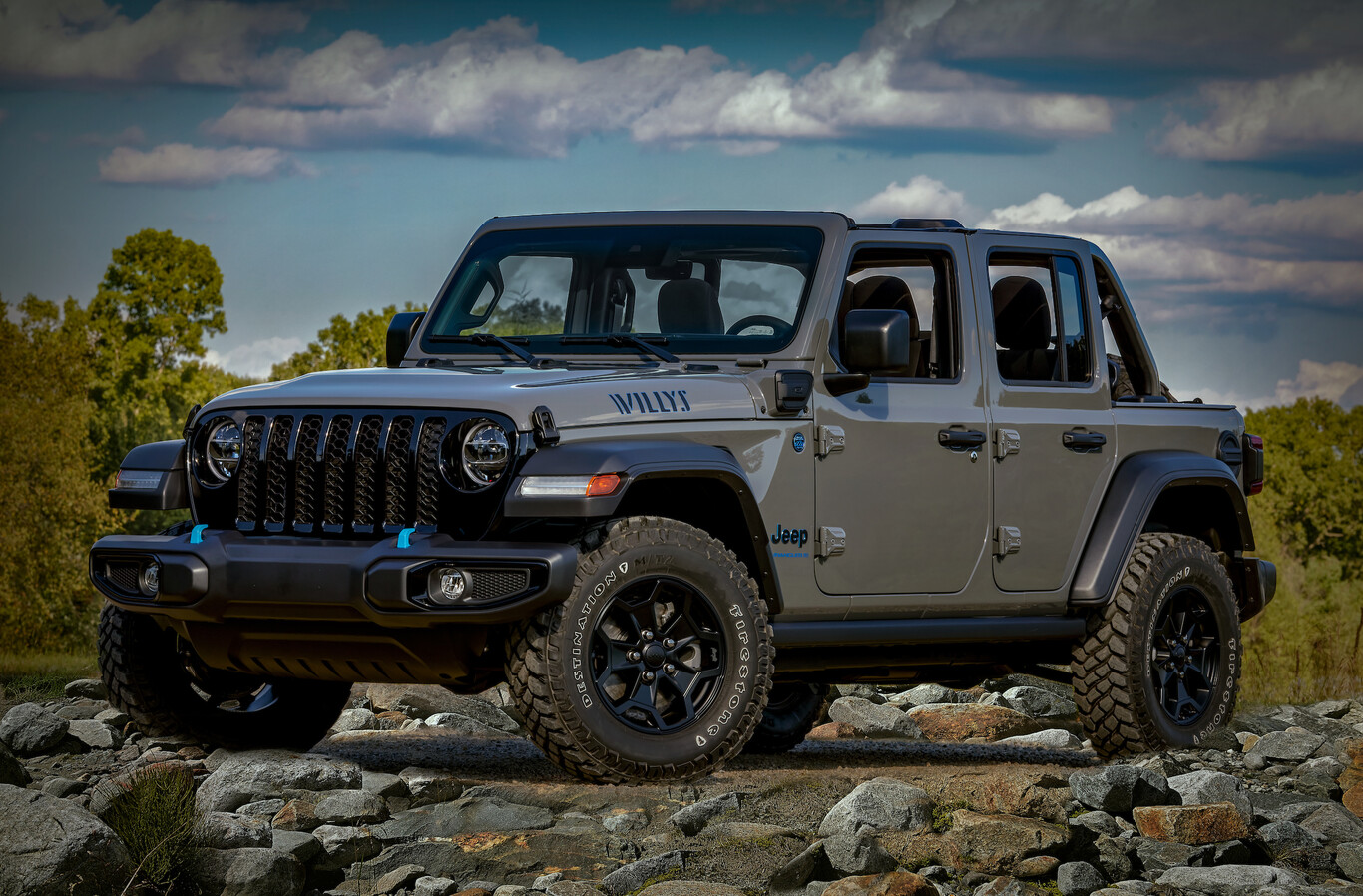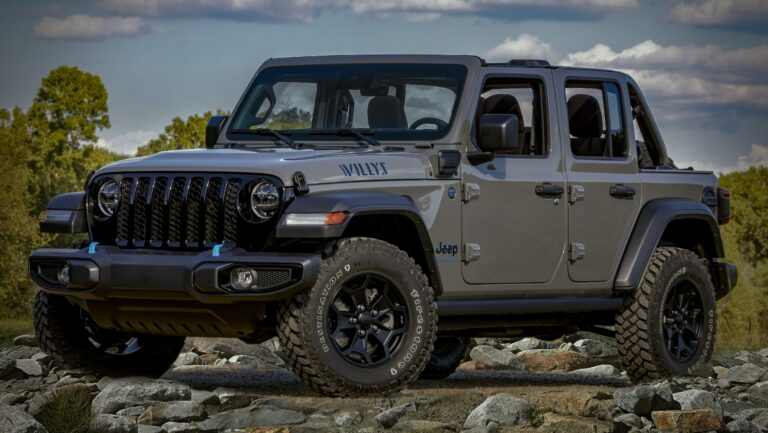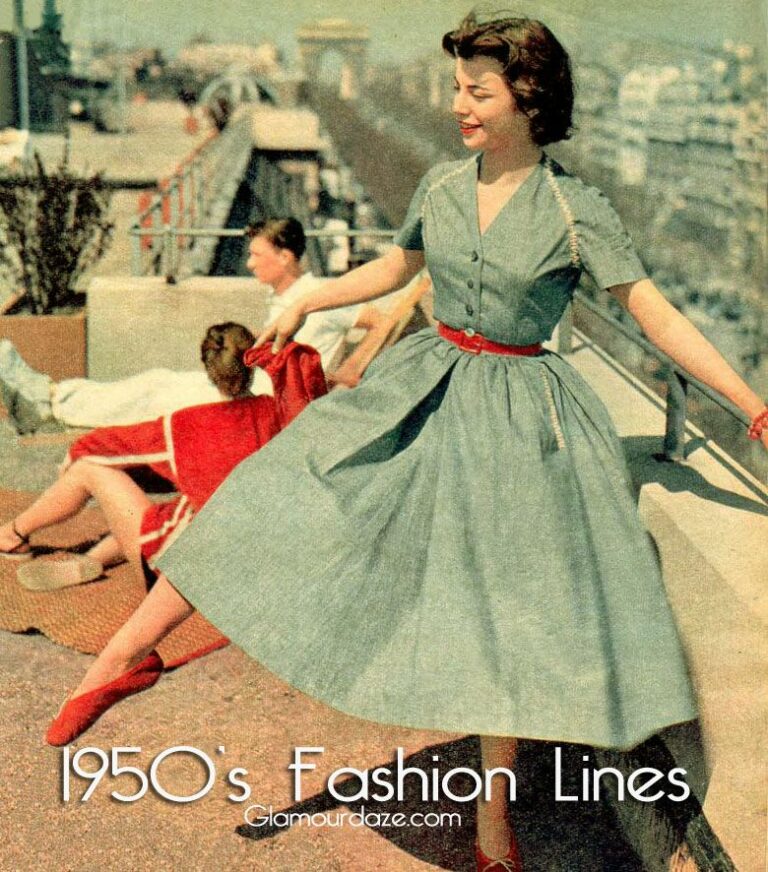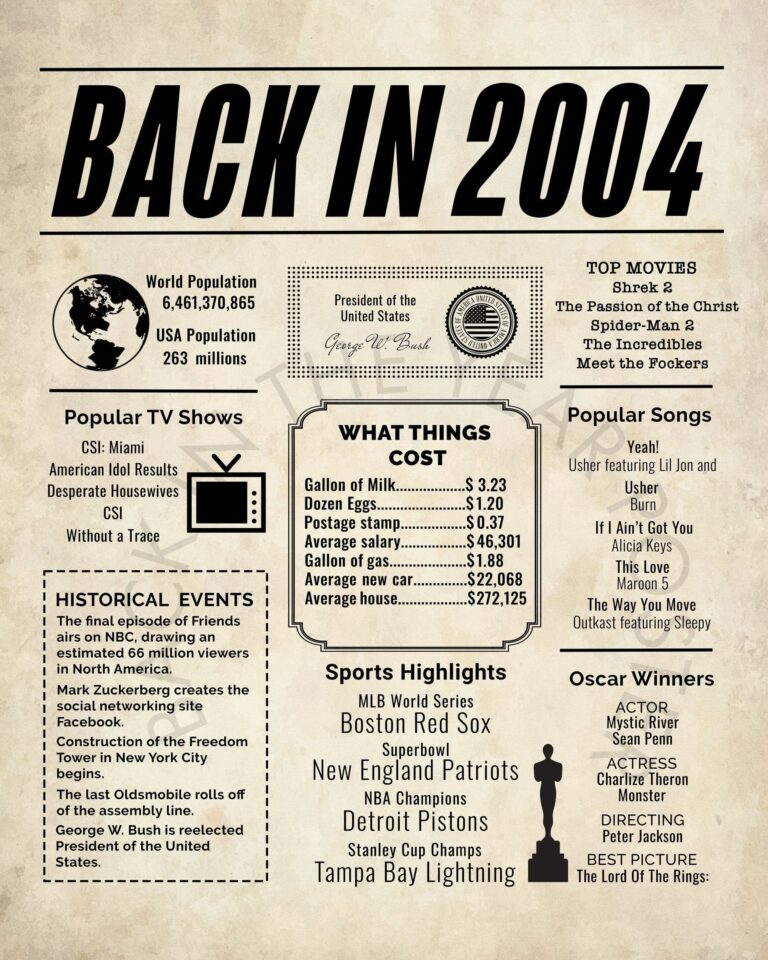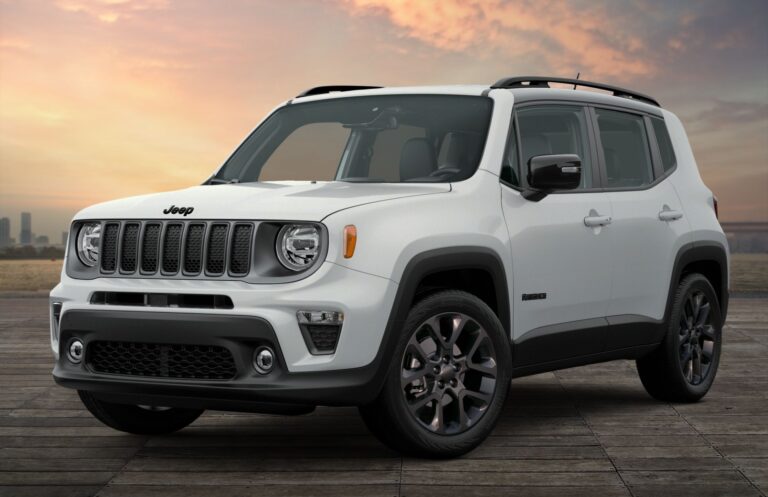Jeep In A Box For Sale: Unpacking Your Dream Off-Roader
Jeep In A Box For Sale: Unpacking Your Dream Off-Roader jeeps.truckstrend.com
The allure of a classic Jeep is undeniable. Its rugged simplicity, go-anywhere capability, and iconic design have cemented its place in automotive history and in the hearts of adventurers worldwide. However, acquiring a fully restored, pristine vintage Jeep can often come with a hefty price tag. This is where the concept of a "Jeep In A Box For Sale" emerges as a compelling alternative, offering enthusiasts a unique pathway to ownership, customization, and a profound understanding of their vehicle from the ground up.
But what exactly is a "Jeep In A Box"? It’s a term that encapsulates the sale of a disassembled Jeep, or a collection of major components, intended for the buyer to assemble, restore, or customize. This isn’t a factory-sealed kit from a modern manufacturer; rather, it typically refers to vintage models like the Willys MB, CJ-series Jeeps (CJ-2A, CJ-3A, CJ-5, CJ-7), or even early YJ Wranglers, where the vehicle is offered in various stages of disassembly or as a comprehensive parts package. For the mechanically inclined, the budget-conscious, or those simply yearning for a deeply personal connection with their vehicle, a "Jeep In A Box" represents not just a purchase, but an embarking on an epic journey of restoration and creation.
Jeep In A Box For Sale: Unpacking Your Dream Off-Roader
What Exactly is a "Jeep In A Box"? Decoding the Offerings
The term "Jeep In A Box" is broad, encompassing several types of offerings, each with its own level of completeness and challenge:
-
The Basic Disassembly Project: This is often a complete, but disassembled, vintage Jeep. It might have been taken apart for restoration that never started or was abandoned. You might receive the frame, axles, body tub, fenders, hood, engine, transmission, and countless smaller components, all separated and possibly crated. The condition of these parts can vary wildly, from mostly rust-free to heavily corroded, requiring significant repair or replacement.
-
The Rolling Chassis Kit: This typically includes a restored or new frame, often with axles and a suspension system already attached, allowing it to "roll." The body tub, fenders, hood, and drivetrain components are usually separate. This option is appealing as it bypasses the laborious frame restoration process, providing a solid foundation for the build.

-
The "Parts Donor" Kit: Less of a cohesive kit and more of a collection, this might be sourced from multiple vehicles or a single heavily damaged one. It’s ideal for someone looking to build a custom Jeep from scratch, using only the essential components and fabricating or sourcing the rest. This requires significant knowledge and fabrication skills.
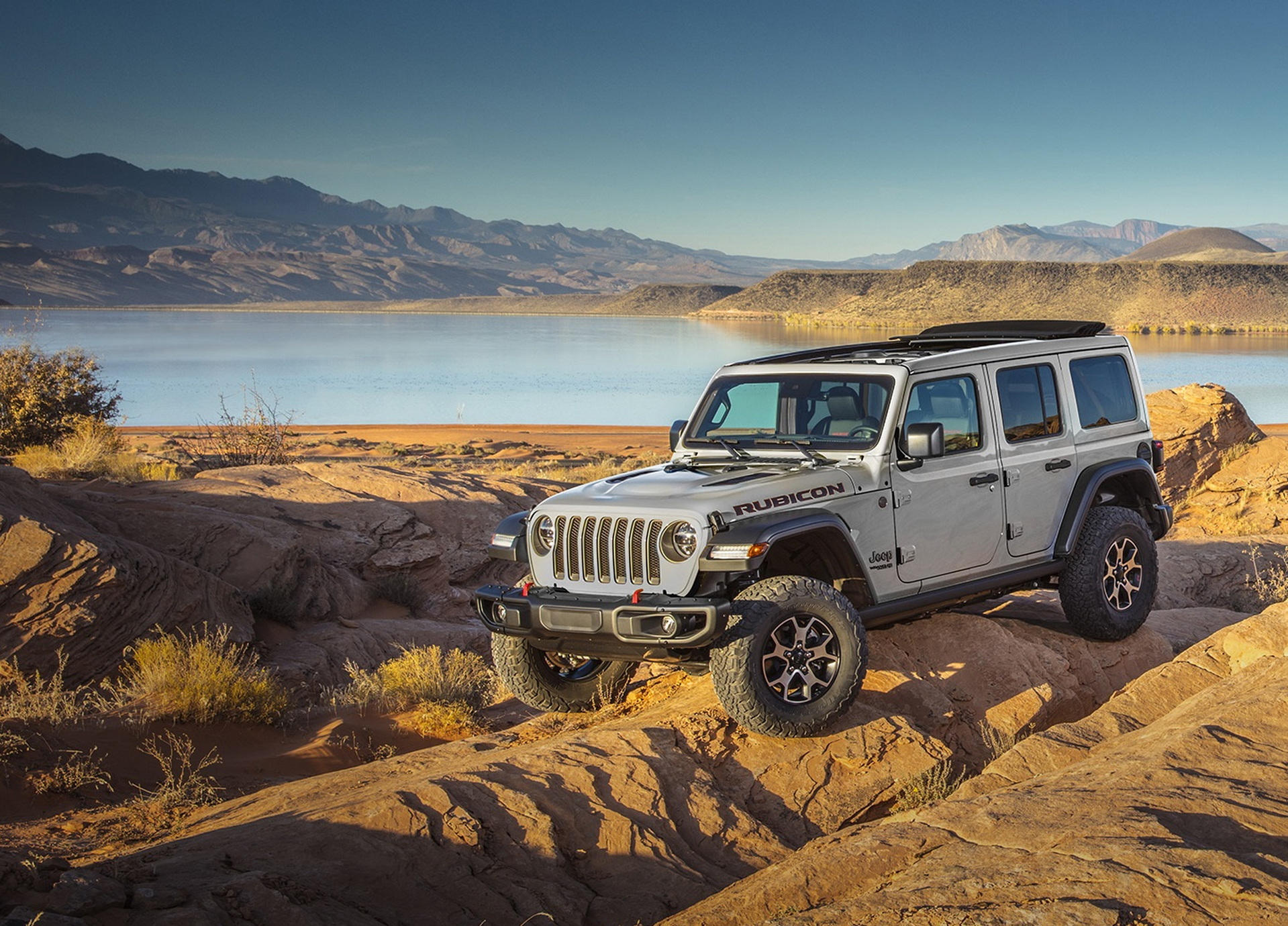
Reproduction Body/Frame Kits: While not strictly "Jeep In A Box," some companies offer brand new, reproduction steel body tubs, frames, and other major components for popular vintage Jeeps (like the CJ-2A/3A or CJ-5). Combining these new parts with a sourced drivetrain and other components also falls under the spirit of building a Jeep from a collection of parts.
Regardless of the specific interpretation, the common thread is that the vehicle is not a running, driving unit. It’s a project, an investment of time, effort, and passion, culminating in a highly personalized and deeply understood vehicle.
Why Consider a "Jeep In A Box" Project? The Benefits Unpacked

Opting for a "Jeep In A Box" over a fully assembled vehicle offers a multitude of compelling advantages:
- Cost Savings (Potential): While not guaranteed, the initial purchase price of a disassembled Jeep or kit is often significantly lower than a comparable, running, and restored model. The savings come from investing your own labor rather than paying someone else for it.
- Ultimate Customization: This is perhaps the biggest draw. Building from the ground up means you can choose every component, every upgrade, and every aesthetic detail. Want a modern engine in a vintage body? A custom suspension setup? Unique interior features? A "Jeep In A Box" provides the canvas.
- In-Depth Mechanical Understanding: By assembling the vehicle yourself, you gain an unparalleled understanding of how every component works, fits, and interacts. This knowledge is invaluable for future maintenance, troubleshooting, and repairs.
- The Satisfaction of a DIY Build: There’s immense pride and satisfaction in bringing a vehicle back to life or building one to your exact specifications. It’s a tangible accomplishment that few other hobbies can offer.
- Preservation of History: For vintage Jeep models, a "Jeep In A Box" project is often a form of automotive archaeology, preserving an iconic piece of history that might otherwise have been scrapped.
- A Rewarding Hobby: For many, the process itself is as enjoyable as the finished product. It’s a long-term hobby that challenges your skills, problem-solving abilities, and patience.
Key Components You Can Expect in a "Jeep In A Box"
The contents of a "Jeep In A Box" will vary, but here’s a general list of major components you’d hope to find:
- Chassis/Frame: The backbone of the vehicle. Its condition (rust, bends) is paramount.
- Body Tubs/Panels: The main body, fenders, hood, grille. Can be original (requiring repair) or new reproduction.
- Axles: Front and rear axles, including differentials and hubs.
- Suspension Components: Leaf springs, shackles, shock absorbers (often needing replacement).
- Engine & Transmission: The drivetrain heart. Condition varies greatly, often requiring a rebuild.
- Transfer Case: Connects the transmission to the front and rear axles for 4WD.
- Steering System: Steering box, linkage, column.
- Braking System: Master cylinder, brake lines, drums/discs, calipers.
- Electrical Components: Wiring harness (often needing replacement), gauges, lights.
- Fuel System: Fuel tank, fuel lines, carburetor/fuel injection system.
- Interior Parts: Seats (frames, cushions), dashboard, steering wheel.
- Wheels and Tires: Sometimes included, but often needing replacement.
- Miscellaneous Hardware: Bolts, nuts, brackets, fasteners – often a significant challenge to inventory and replace.
It is crucial to get a detailed inventory from the seller and inspect everything thoroughly before purchase.
Navigating the "Jeep In A Box" Market: What to Look For
Purchasing a "Jeep In A Box" requires careful consideration and due diligence:
- Completeness: Get a detailed list of every component included. What’s missing? Missing major components (engine, transmission) can significantly increase your budget and search time.
- Condition of Components: Inspect for rust, cracks, bends, and excessive wear. A rusty frame or body tub can turn a project into a nightmare. Drivetrain components should be inspected for internal damage if possible.
- Documentation (Title!): This is non-negotiable. Ensure the seller has a clear title or proper bill of sale for the vehicle (or at least the frame with its VIN). Without it, registering your finished Jeep could be impossible. Understand your local DMV requirements for "assembled" or "reconstructed" vehicles.
- Source/Seller Reputation: Buy from reputable sellers or individuals with a clear history. Ask questions, request more photos, and ideally, inspect in person.
- Matching Numbers/Compatibility: If you’re aiming for a period-correct restoration, verify that the engine, transmission, and axles match the vehicle’s original specifications. If not, ensure components are compatible for a custom build.
- Rust, Rust, Rust: This is the arch-nemesis of any restoration. Pay extreme attention to rust on the frame, body mounts, floor pans, and common rust areas for the specific Jeep model. Surface rust is manageable; structural rust is a major headache.
- Your Budget: Factor in not just the purchase price, but also the cost of missing parts, new components (wiring, brakes, tires), tools, paint, and unexpected repairs. A "Jeep In A Box" often has hidden costs.
The "Jeep In A Box" Build Process: A High-Level Overview
While every build is unique, here’s a general sequence for assembling your "Jeep In A Box":
- Assessment & Planning: Inventory all parts, research the specific model, identify missing components, create a detailed budget and timeline, and gather necessary tools.
- Frame Restoration: Clean, repair, reinforce, and paint the frame. This is your foundation.
- Axle & Suspension Installation: Mount the axles, springs, shocks, and steering components to the frame.
- Drivetrain Assembly: Rebuild (if necessary) and install the engine, transmission, and transfer case onto the frame.
- Brake & Fuel Systems: Install brake lines, master cylinder, fuel tank, and fuel lines.
- Body Restoration & Mounting: Repair any rust or damage on the body tub, fenders, and hood. Prep for paint. Mount the body onto the frame.
- Wiring & Electrical: Install a new wiring harness (highly recommended for vintage Jeeps), lights, gauges, and other electrical components.
- Interior & Exterior Finishing: Install seats, dashboard, windshield, soft top/hardtop, and any exterior accessories. Paint the vehicle.
- Fluid Fill & First Start: Fill all fluids, bleed brakes, double-check all connections, and attempt the moment of truth – the first engine start.
- Testing & Adjustments: Drive the vehicle in a controlled environment, making adjustments to steering, brakes, and engine tuning.
Challenges and Solutions in a "Jeep In A Box" Project
Building a "Jeep In A Box" is not without its hurdles:
- Missing or Damaged Parts: It’s rare for a kit to be 100% complete or perfect.
- Solution: Thorough pre-purchase inspection, extensive online research, joining Jeep forums, and connecting with specialized vintage Jeep parts suppliers.
- Unexpected Damage/Rust: What looks like surface rust can hide deep corrosion.
- Solution: Be prepared for welding, fabrication, and metalwork. Budget for professional help if needed.
- Lack of Specialized Tools/Knowledge: Some tasks require specific tools or expertise.
- Solution: Renting tools, investing in a good welder, and leveraging online tutorials, repair manuals, and local mechanic shops for complex tasks.
- Time & Budget Creep: Projects almost always take longer and cost more than initially planned.
- Solution: Set realistic expectations, build in contingency funds (20-30% extra), and break the project into manageable phases.
- Finding Rare Parts: For less common models or specific components, sourcing can be difficult.
- Solution: Network with other enthusiasts, attend swap meets, and explore international suppliers. Fabrication may be necessary.
Who is a "Jeep In A Box" For?
This type of project is ideal for:
- Dedicated DIY Enthusiasts: Those who love working with their hands and are eager to learn.
- Aspiring Mechanics/Restorers: Provides invaluable hands-on experience.
- Budget-Conscious Buyers: Who prioritize labor over upfront cost.
- Customization Aficionados: Who want a truly unique vehicle tailored to their exact specifications.
- Anyone Seeking a Rewarding Long-Term Hobby: It’s a marathon, not a sprint, but the payoff is immense.
Practical Advice and Actionable Insights
- Do Your Homework: Before buying, extensively research the specific Jeep model you’re interested in. Understand its common issues, parts availability, and restoration challenges.
- Join the Community: Online forums, Facebook groups, and local Jeep clubs are invaluable resources for advice, parts sourcing, and moral support.
- Start with the Manual: Invest in a factory service manual and a parts catalog for your specific Jeep model. These are your bibles.
- Document Everything: Take photos before disassembly, label every part, and keep detailed notes. This will save countless hours during reassembly.
- Patience is a Virtue: This is not a quick project. Embrace the process, celebrate small victories, and don’t get discouraged by setbacks.
- Safety First: Always use proper safety gear (gloves, eye protection) and follow safe workshop practices.
Price Table: Estimated Costs for "Jeep In A Box" Components (USD)
Please note: These prices are highly variable based on condition, rarity, location, and seller. This table provides ranges for common scenarios.
| Item/Category | Description | Estimated Price Range (USD) | Notes |
|---|---|---|---|
| Basic "Box" Kit | Disassembled frame, body tub, fenders, hood (rusty/rough) | $1,500 – $4,000 | Expect significant rust repair, missing small parts. Often without engine/trans. |
| Rolling Chassis Kit | Restored/new frame, axles, suspension installed; body separate (rough) | $3,000 – $8,000 | Saves frame restoration time. Still needs extensive bodywork and all drivetrain. |
| Nearly Complete Kit | Disassembled, but includes engine, transmission, transfer case (needs rebuild) and most major components. | $5,000 – $12,000 | Higher initial cost, but potentially fewer major component purchases. Condition is key. |
| Reproduction Body Tub | New steel body tub (e.g., for CJ-2A/3A/5/7) | $3,000 – $6,000 | Excellent starting point for body, but still needs frame, drivetrain, and all other components. |
| Reproduction Frame | New steel frame (e.g., for CJ-2A/3A/5/7) | $1,500 – $3,000 | Provides a solid, rust-free foundation. |
| Engine (Used/Core) | Original type (e.g., Go-Devil, Hurricane, AMC I6) | $500 – $2,500 | Often needs full rebuild ($1,500-$4,000 for professional rebuild). |
| Transmission/T-Case | Original type (e.g., T-90, T-18, Dana 18/20) | $300 – $1,500 | May need rebuild ($500-$1,500 for professional rebuild). |
| Axles (Used) | Front and Rear (e.g., Dana 25, 27, 30, 44) | $300 – $1,000 per pair | Inspection for bends/wear critical. |
| New Wiring Harness | Complete vehicle wiring kit | $300 – $800 | Highly recommended for reliability and safety. |
| Brake System Overhaul | All new lines, master cylinder, wheel cylinders/calipers, pads/shoes | $500 – $1,500+ | Essential for safety. |
| Suspension Kit | New leaf springs, shackles, shocks | $400 – $1,200+ | Improves ride quality and safety. |
| Interior Kit | Seat upholstery, foam, dash components | $500 – $1,500+ | |
| Paint & Bodywork | Materials alone (DIY) to Professional Shop | $500 – $10,000+ | Huge variable depending on quality and whether DIY or professional. |
| Miscellaneous Hardware | Bolts, nuts, clips, fasteners, seals, gaskets | $500 – $2,000+ | Often overlooked, but adds up quickly. |
| TOTAL PROJECT ESTIMATE | (Initial Kit + Parts + Labor/Tools) | $8,000 – $30,000+ | Highly variable; depends on initial kit, desired quality, and DIY vs. professional work. |
Frequently Asked Questions (FAQ)
Q1: Is buying a "Jeep In A Box" always cheaper than buying a restored Jeep?
A: Not necessarily. While the initial purchase is often lower, the cost of parts, tools, and the sheer time commitment can sometimes exceed the cost of a moderately restored vehicle. However, you gain a custom build and invaluable experience.
Q2: How long does a "Jeep In A Box" project typically take?
A: This varies wildly based on your skill level, available time, budget, and the initial condition of the kit. A comprehensive build can take anywhere from 6 months to several years of dedicated effort.
Q3: Do I need specialized tools or skills?
A: You’ll need a good set of general mechanic’s tools. Beyond that, tools for welding, grinding, cutting, and possibly an engine hoist are often necessary. Skills in basic mechanics, electrical work, and metal fabrication are highly beneficial. Many skills can be learned along the way.
Q4: How do I get a title or register a "Jeep In A Box"?
A: This is critical. Ensure the "box" comes with a clear title or a bill of sale for the VIN-stamped frame. Research your state’s Department of Motor Vehicles (DMV) regulations for "assembled" or "reconstructed" vehicles before you buy. Some states have simpler processes than others.
Q5: Can a beginner take on a "Jeep In A Box" project?
A: Yes, with a strong willingness to learn, patience, access to resources (manuals, online forums), and a realistic understanding of the challenges, a beginner can successfully complete a project. Starting with a more complete or higher-quality "box" can ease the learning curve.
Q6: Where can I find parts for a vintage "Jeep In A Box"?
A: Specialty vintage Jeep parts suppliers (e.g., Omix-Ada, Quadratec, Kaiser Willys), online marketplaces (eBay, Facebook Marketplace), dedicated Jeep forums, local salvage yards, and even antique auto swap meets are good sources.
Conclusion: The Journey of Building Your Own Legend
The "Jeep In A Box For Sale" isn’t just an advertisement; it’s an invitation to embark on an automotive adventure. It’s a challenge that demands patience, problem-solving, and a willingness to get your hands dirty, but the rewards are immeasurable. From the satisfaction of breathing new life into a classic to the unparalleled understanding of every nut and bolt, building your own Jeep from a collection of parts transforms ownership into a profound personal achievement. It’s more than just a vehicle; it’s a testament to your dedication, a rolling piece of history, and a personalized legend crafted by your own hands, ready to conquer any trail you dare to point it at.
